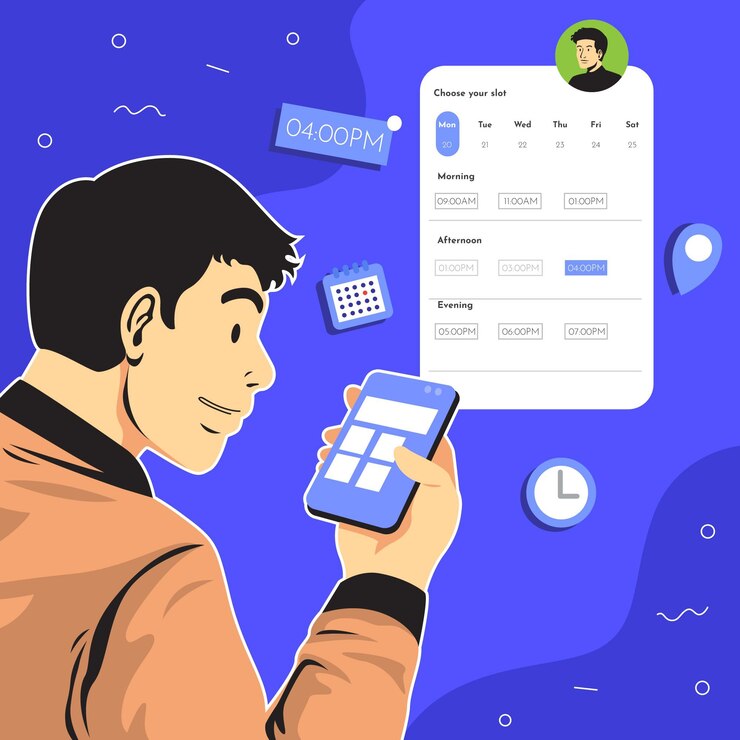Paid Time Off (PTO) is one of the most valuable employee benefits a company can offer. It allows workers to rest, recover, and attend to personal or family matters, all while maintaining financial stability. However, PTO isn’t just a benefit; it’s a regulated component of employment law in many jurisdictions.
Accurate PTO tracking is therefore more than a matter of good HR practice, it’s a legal necessity. Businesses that fail to record, manage, and compensate PTO properly risk noncompliance with labor laws, which can lead to serious financial penalties, lawsuits, and reputational damage.
This article explores why PTO tracking is essential for legal compliance, key labor laws governing time off policies, and best practices for managing PTO in accordance with global regulations.
Why PTO Tracking Is Crucial for Legal Compliance
Ensures Fair and Lawful Leave Allocation
Labor laws across the world stipulate minimum PTO entitlements for employees, often based on seniority, employment type, and working hours. Tracking PTO accurately ensures that employees receive the time off they are legally owed, and that employers can prove compliance if audited.
Examples:
The European Union’s Working Time Directive mandates a minimum of four weeks of paid leave per year.
Canada’s Employment Standards Acts define province-specific leave entitlements, ranging from two to three weeks of paid vacation depending on tenure.
In the United States, while federal law doesn’t require PTO, many states such as California, New York, and Massachusetts mandate paid sick leave that must be tracked separately from vacation time.
Failing to allocate or track PTO properly can result in wage violations, back pay liabilities, and administrative fines. Proper tracking not only ensures compliance but also builds employee trust by guaranteeing transparency and fairness in leave distribution.
Prevents Wage and Hour Violations
PTO affects employee compensation directly. Mismanaging PTO records can therefore lead to wage and hour disputes, a common source of labor lawsuits.
Some jurisdictions treat unused PTO as earned wages, meaning it must be paid out upon termination. Employers who fail to do this risk being accused of wage theft or unlawful deductions.
For instance:
Under California Labor Law, unused PTO is considered earned wages that must be paid out when an employee leaves the company.
While the U.S. Fair Labor Standards Act (FLSA) doesn’t mandate PTO, it requires accurate payment for all hours worked and protection against wage miscalculations.
Automated PTO tracking systems prevent such violations by ensuring accurate accruals, timely payouts, and clean records for payroll auditing.
Reduces the Risk of Audits and Legal Disputes
Labor authorities frequently audit companies to ensure compliance with employment laws. Poor PTO documentation or inconsistent tracking systems can raise red flags and result in penalties.
When PTO records are incomplete, HR teams may struggle to produce evidence of compliance during investigations, exposing the company to:
Fines or sanctions from labor departments.
Employee complaints over denied leave or inaccurate balances.
Lawsuits alleging nonpayment of earned PTO or discriminatory practices.
Maintaining accurate, transparent PTO records demonstrates organizational accountability and helps employers resolve disputes quickly and confidently.
Promotes Workplace Equality and Prevents Discrimination
PTO laws and anti-discrimination regulations often intersect. Employers must ensure that PTO policies are applied equitably to all employees, regardless of gender, race, religion, disability, or other protected characteristics.
In the U.S., the Equal Employment Opportunity Commission (EEOC) enforces laws ensuring fair leave practices. For example, denying or approving PTO inconsistently between male and female employees, or between salaried and hourly staff, can constitute indirect discrimination.
Automated PTO tracking creates an objective, transparent record of all leave requests and approvals, helping employers demonstrate that PTO decisions are made based on policy, not bias.
Manages PTO Accrual, Carryover, and Expiration Rules
Different regions have varying rules for how PTO is accrued, carried over, or expired. A proper tracking system enforces these automatically, preventing unintentional violations.
Examples:
California prohibits “use-it-or-lose-it” PTO policies, unused PTO must roll over each year.
France mandates at least five weeks of paid leave, and employers must track both accrual and usage precisely.
The United Kingdom’s Working Time Regulations allow employees to carry over a portion of unused holiday into the next year under specific conditions.
Tracking PTO manually makes it difficult to manage these nuances accurately. Automated systems, however, apply accrual and expiration rules consistently based on local laws and company policy, eliminating compliance risks.
Key Labor Laws That Affect PTO Compliance
The Fair Labor Standards Act (FLSA), United States
The FLSA does not require employers to offer PTO, but once a company chooses to do so, it must treat PTO-related pay in compliance with wage and overtime laws. Incorrect PTO payouts or misclassified time-off hours can violate the FLSA’s wage requirements.
The Family and Medical Leave Act (FMLA), United States
The FMLA provides eligible employees with up to 12 weeks of unpaid, job-protected leave per year for family or medical reasons. PTO tracking is crucial for distinguishing between paid leave (PTO) and FMLA leave, ensuring employees are reinstated correctly after their absence.
State and Local Leave Laws (U.S.)
Many U.S. states and cities have enacted their own paid sick leave and family leave laws, requiring detailed tracking to avoid violations.
Examples:
California: At least one hour of paid sick leave must accrue for every 30 hours worked.
New York: Requires between 40–56 hours of paid sick leave annually, depending on employer size.
Washington, D.C.: Mandates tiered paid sick leave accrual based on employer size.
The European Working Time Directive
This EU-wide directive guarantees employees at least four weeks of paid leave annually, ensuring workers have adequate rest. PTO tracking ensures employers comply with these minimum entitlements and avoid disputes over denied leave or missed accruals.
UK Holiday Pay Regulations
In the United Kingdom, employees are legally entitled to 5.6 weeks of paid holiday each year. Calculating PTO for irregular-hour or part-time workers can be complex, making automated tracking essential to calculate accurate holiday pay and prevent underpayment claims.
Canada’s Employment Standards Acts
Canadian provinces each have their own employment standards legislation dictating vacation entitlements, accrual rates, and payout rules. For example:
Ontario: Two weeks of vacation for employees with less than five years of service, and three weeks thereafter.
British Columbia: Similar entitlements, but vacation pay must equal at least 4%–6% of gross wages.
Employers must track accruals precisely to comply with provincial requirements and provide accurate vacation pay.
Additional Legal and Operational Benefits of PTO Tracking
Improves Transparency and Employee Trust
When employees can see their PTO balances and request statuses in real time, it builds confidence that the company manages time-off policies fairly and accurately.
Strengthens Recordkeeping for Audits
Regulatory agencies often require documentation of time-off accrual and usage during compliance reviews. Maintaining digital records ensures readiness for such audits and minimizes administrative stress.
Enhances Workforce Planning
Accurate PTO data helps managers anticipate staffing shortages, allocate workloads, and ensure business continuity during peak vacation periods or seasonal fluctuations.
Supports Global Compliance for Multinational Teams
For international companies, managing different leave regulations across countries can be complex. A unified PTO tracking system simplifies compliance across jurisdictions while maintaining consistent internal standards.
Best Practices for PTO Tracking and Legal Compliance
Implement Automated PTO Tracking Software
Manual tracking through spreadsheets invites errors and inconsistencies. An automated PTO system offers:
Real-time accrual calculations
Approval workflows aligned with company policy
Built-in compliance reporting
Integration with HR and payroll systems
Establish a Comprehensive Written PTO Policy
A clearly documented PTO policy should include:
Accrual rates and eligibility requirements
Rules for carryover and payout
Procedures for requesting and approving leave
Distinctions between vacation, sick, and unpaid leave
Make this policy accessible to all employees and ensure they acknowledge understanding it.
Conduct Regular PTO Audits
Schedule periodic reviews of PTO balances, payouts, and accrual calculations. This helps:
Identify inconsistencies early
Confirm policy adherence
Prepare documentation for potential audits or disputes
Retain PTO Records for the Required Duration
In most jurisdictions, employers must maintain payroll and time-off records for at least three years, though some regions require longer. Keeping these records digitally ensures they’re secure, accessible, and compliant with data protection standards.
Stay Current with Changing Labor Laws
PTO and labor laws evolve frequently. HR teams should monitor legal updates and adjust internal policies accordingly to remain compliant. Partnering with labor law experts or using compliance software can simplify this process.
Frequently Asked Questions (FAQ) About PTO Tracking and Compliance
Is PTO legally required in all countries?
No. In the United States, federal law doesn’t require PTO, though many states and cities mandate paid sick leave. In contrast, most European, Canadian, and Asian countries legally require employers to offer minimum paid vacation or annual leave entitlements. Employers should always verify local labor laws.
What are the legal risks of not tracking PTO accurately?
Inaccurate PTO tracking can result in:
Wage and hour violations for unpaid or underpaid leave.
Penalties during labor audits.
Employee lawsuits for denied or miscalculated PTO.
Damage to company reputation and employee morale.
Failure to comply can lead to financial fines, legal settlements, and long-term operational disruption.
How long should employers keep PTO records?
Most labor authorities recommend keeping PTO and payroll records for at least three years after the employment period ends. However, some countries, such as the UK and Canada, require record retention for six years or longer to meet audit and tax obligations.
How do automated PTO systems help with compliance?
Automated systems ensure accuracy by:
Calculating accruals and payouts automatically based on legal standards.
Enforcing carryover and expiration rules.
Generating compliance reports for audits.
Reducing human error common in manual recordkeeping.
Automation not only saves time but provides verifiable evidence of compliance if a dispute arises.
Do employers need to pay out unused PTO when an employee leaves?
This depends on the jurisdiction. In California, unused PTO is treated as earned wages and must be paid out at termination. In other U.S. states, payout policies vary by company. In most European countries, employers must compensate employees for accrued but unused vacation at the end of employment.
How can companies ensure PTO policies are applied fairly?
Employers should establish standardized approval processes and ensure all requests are tracked transparently. Using a digital system prevents bias or favoritism and ensures equal treatment across all employees, regardless of rank, gender, or department.
What’s the difference between PTO, vacation, and sick leave legally?
“PTO” is a broad term encompassing all forms of paid leave, including vacation, personal, and sick days. Some jurisdictions require separate tracking for sick leave to comply with health and safety laws, while others allow combined PTO banks. Employers must understand their local legal definitions to remain compliant.
How often should HR teams audit PTO compliance?
Ideally, PTO compliance should be reviewed quarterly and formally audited annually. Regular audits help identify discrepancies, update legal requirements, and prepare the organization for external inspections or employee grievances.
Conclusion
PTO tracking is not merely an administrative task, it’s a cornerstone of labor law compliance and a reflection of corporate integrity. By maintaining precise records, automating accruals, and enforcing clear policies, organizations protect themselves from legal risk while ensuring employees receive the time off they’re entitled to.
Accurate PTO tracking strengthens compliance, boosts transparency, and builds a culture of trust and fairness, all of which are essential for sustainable, ethical business growth.















